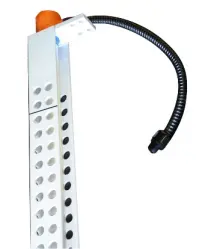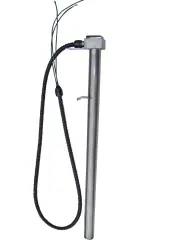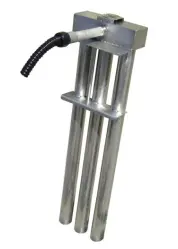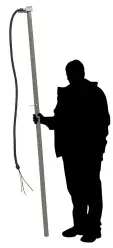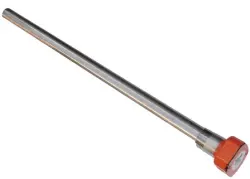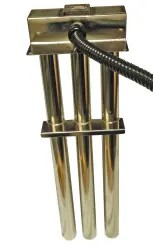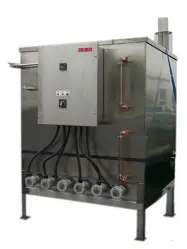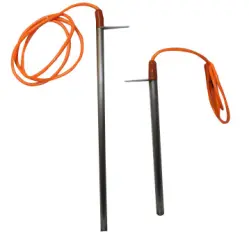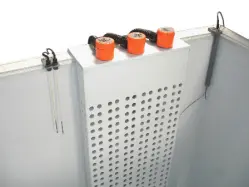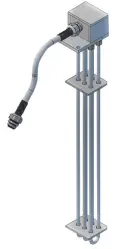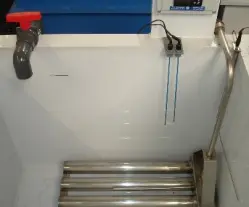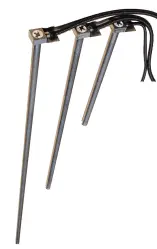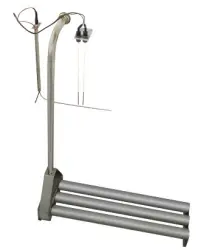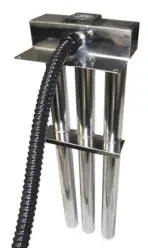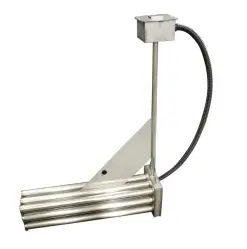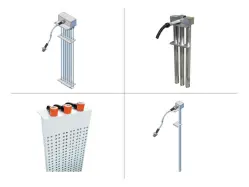Immersion Heaters by Application
Immersion Heaters consist of tubular heating elements immersed into the fluid and depend on the application. Industrial Immersion heaters are very efficient and cost effective since all energy that is generated is dissipated directly into the medium which is being heated. Immersion Heaters are used to heat fluids such as water, oil, chemical solutions, electro-plating and salt solutions. Since some of these fluids can be quit aggressive, the sheath material needs to be carefully chosen. The most common sheath materials are stainless steel 304, 316, Titanium and quartz. Besides choosing the correct sheath material, vicious chemicals may also require to lower the wattage. Our immersion heaters have a wattage output of approximately 40 watts per square inch. At the 40 WSI the temperature output, out of solution is approximately 1000 degF; except for Teflon and special watt densities which are less.
Electric immersion heaters are typically connected in a temperature control box to an electro-mechanical conductor. There is a set of three screws or lugs (depending on the wire size) on the top for power, and an opposing set on the bottom for the heater connection.
We strongly recommend the use of level controls and over-temperature sensors; especially for Teflon coated heaters and quartz heaters.
Types of immersion heaters
- Screw-Plug Immersion Heaters
- Flanged Immersion Heaters
- Over the Side immersion Heaters
- L-Shaped/Bottom Heaters
These heaters are typically installed in the bottom of the tank. If the heater is inserted into a thermo well, emptying the tank for a heater change can be avoided.
Common watt densities for immersion heaters:
- 45 to 100 WSI: water
- 20 to 25 WSI: light oils, cooling fluids
- 10 to 15 WSI: medium viscosity oils
- 7 WSI: rude crude oil, vicious materials
- 5 WSI: very vicious materials




